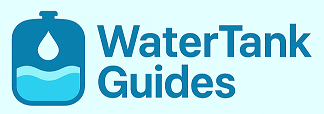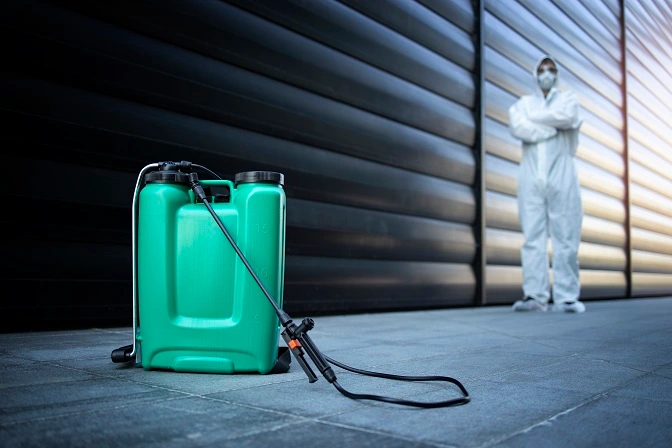If you’ve ever wondered how to use a pressure washer with a water tank, the short answer is simple: connect the washer’s intake hose to your filled tank, ensure a steady water flow, prime the pump, and you’re ready to start cleaning. It’s an easy and flexible way to clean driveways, patios, cars, or walls — even when you don’t have a direct tap connection.
A pressure washer with a water tank gives you freedom to clean anywhere, whether it’s your backyard, garden, or a place without plumbing access. This guide explains everything — from choosing the right tank to setup, safety, and maintenance — so you can use your washer efficiently and safely.
Why Use a Water Tank Instead of a Tap Connection
Many people think pressure washers must be connected to a garden hose, but that’s not always necessary. A portable pressure washer with its own water tank offers several advantages:
- You can clean in outdoor areas without a tap connection.
- The water tank capacity allows you to control how much water you use.
- It reduces pressure drops that often occur in low-pressure plumbing lines.
- It’s perfect for domestic water tank setups in small houses, garages, or mobile cleaning units.
This system works as an independent water supply, especially useful for outdoor cleaning systems like washing vehicles, garden tools, or fences.
Choosing the Right Water Tank for Your Pressure Washer
Before you connect a tank to your washer, pick one that matches your cleaning needs.
The tank’s capacity determines how long you can clean without refilling.
For most homes, a 30–100-gallon water storage tank is ideal.
If you often clean cars or large patios, go for 75 gallons or more. Smaller tasks like window or deck cleaning can work well with a 40-gallon tank.
Material choice also matters:
- Plastic water tanks are lightweight, easy to move, and affordable.
- Stainless steel water tanks are more durable and hygienic, but heavier.
- Fiberglass tanks are excellent for outdoor or long-term use.
Always choose a clean water storage tank with a tight lid to prevent dust or insects from entering.
How to Set Up a Pressure Washer with a Water Tank
Setting up the system correctly ensures smooth pressure and prevents pump damage.
Follow these steps:
- Position the tank slightly higher than the washer. This helps create a natural gravity-fed flow.
- Connect the outlet valve of the tank to your washer’s water inlet using a quality hose.
- Prime the hose by letting water flow through it before turning on the pressure washer — this removes trapped air.
- Make sure the hose is airtight and free from bends or leaks.
- Once the flow is steady, turn on the washer and start cleaning.
If your washer doesn’t draw water properly, check that the water tank capacity is sufficient and the outlet valve is fully open.
Step-by-Step Guide: Using a Pressure Washer with a Water Tank
To keep it simple, here’s an easy breakdown you can follow every time.
Quick Setup Checklist:
- Drain → Connect → Prime → Test → Clean → Rinse
Here’s what each step means in detail:
- Drain & Fill: Empty any old or dirty water from the tank, then refill it with clean, fresh water.
- Connect: Attach the hose firmly to the tank outlet and washer inlet.
- Prime: Open the valve to allow water to flow until all air escapes.
- Test Pressure: Turn on the washer for a few seconds to ensure smooth pressure.
- Clean: Use steady, sweeping motions for effective cleaning.
- Rinse: After use, disconnect the hose and drain the tank to prevent buildup.
This method keeps your high-pressure washer running efficiently and extends the life of your pump.
Best Practices and Maintenance Tips
Even with the right setup, good habits make a big difference in performance.
Follow these best practices for long-term results:
- Clean your domestic water tank regularly to avoid sediment and algae buildup.
- Use a fine mesh filter on the tank outlet to block debris.
- Store the tank away from direct sunlight to reduce bacterial growth.
- Always empty leftover water after use to prevent standing water contamination.
For a detailed guide on keeping tanks clean, you can check our article on How to Clean Your Water Tank at Home — it explains safe, chemical-free methods you can follow easily.
Common Problems and How to Fix Them
Here are a few frequent issues users face when using a pressure washer with a water tank, along with quick fixes:
- Low pressure: Check for air leaks in the hose or a low water level in the tank.
- Air lock: Re-prime the pump by letting water flow before switching on the washer.
- Dirty intake: Clean the filter mesh regularly.
- Fluctuating pressure: Ensure the tank outlet is fully open and not blocked by sediment.
Routine inspection of hoses and valves keeps your home water supply system running smoothly.
Real-Life Case Study: Small Home in Arizona
A homeowner in Tucson, Arizona, used a portable pressure washer connected to a 50-gallon plastic water tank for cleaning their small house’s driveway and backyard.
Initially, they faced low pressure and water flow problems because of air trapped in the hose.
After repositioning the tank about two feet higher than the washer and adding a simple inline filter, the flow stabilized completely. They also cleaned the tank every two months using a natural water tank cleaning solution of vinegar and baking soda.
The result?
Consistent water pressure, spotless cleaning, and 30% less water use per session.
This real case shows that a properly set up pressure washer with a water tank can deliver great results — without wasting water or using harsh chemicals.
Environmental Benefits of a Tank System
Using a pressure washer with a water tank is not only convenient but also environmentally friendly. It allows you to:
- Control water use, reducing waste.
- Use eco-friendly cleaning methods instead of chemical solutions.
- Reuse rainwater or recycled water for outdoor cleaning safely.
- Support sustainable cleaning practices for small homes.
According to the World Health Organization (WHO), maintaining clean stored water prevents bacteria and contaminants that can harm your health and the environment. A clean tank and responsible cleaning habits protect both your home and nature.
Conclusion
Using a pressure washer with a water tank is one of the smartest ways to clean efficiently, especially for small homes or places without a direct tap.
It gives you full control over your water tank capacity, helps conserve water, and keeps your system portable and reliable.
By following simple setup steps, maintaining your domestic water tank, and using natural cleaning solutions, you’ll enjoy powerful cleaning without wasting water or relying on chemicals.
Remember — a clean tank and a well-maintained pressure washer mean better performance, longer equipment life, and a healthier, eco-friendly home.
Frequently Asked Questions (FAQs)
1. Can I connect any pressure washer to a water tank?
Yes, most portable pressure washers can connect to a water tank. Make sure the water supply hose fits securely and that the tank is positioned high enough for consistent pressure flow.
2. What size tank should I use for home cleaning?
A 30–100-gallon water tank capacity is ideal for most home cleaning jobs. Larger tanks work better if you clean cars, patios, or multiple areas in one session.
3. Can a pressure washer work without a pump?
Some washers can draw water directly from a tank if it’s gravity-fed. However, for strong pressure, using a washer with an internal pump is best.
4. How can I keep the water clean inside the tank?
Clean the tank every few months using natural agents like vinegar or baking soda. You can follow our full guide here: How to Clean a Plastic Water Tank in Your House Without Chemicals
5. Is it safe to use rainwater in a pressure washer?
Yes, as long as the rainwater is filtered and free from debris. Always clean your home water storage system regularly to prevent contamination.
Ethan Wells is the author of Water Tank Guides, a blog focused on practical tips for water tank cleaning, maintenance, and installation. His mission is to help readers keep their water clean, safe, and their tanks long-lasting through simple, easy-to-follow guides.

